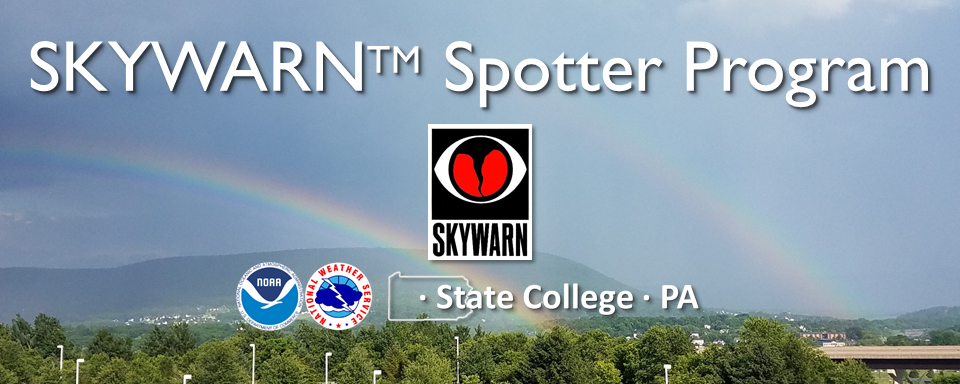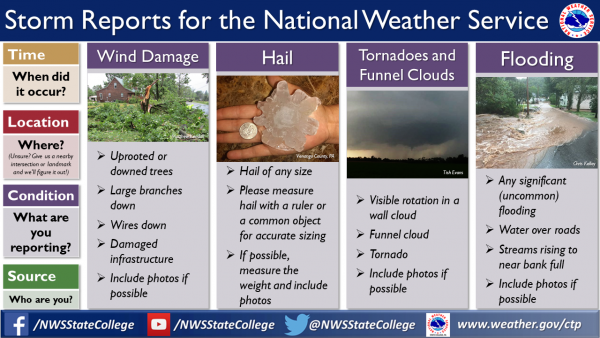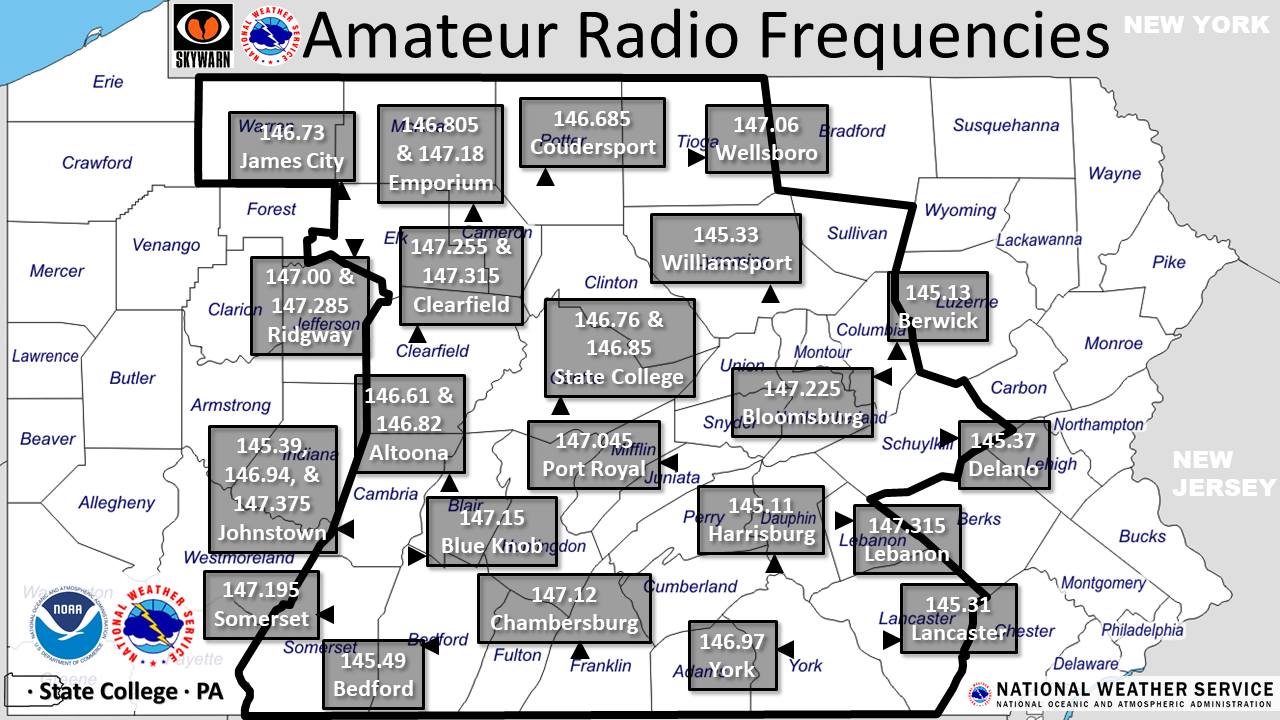
Below you will find a calendar with the dates of upcoming SkyWarn Spotter talks scheduled for Central Pennsylvania, presented by the National Weather Service Office in State College. Please be aware that SkyWarn talks are conducted during the Spring and Fall. Anyone can attend any talk - regardless of where you live!
CENTRAL PENNSYLVANIA SKYWARN TRAINING SCHEDULE
Some important items to note:
• CHECK CALENDAR EVENT FOR REGISTRATION INFORMATION.
• BE SURE TO CHECK THIS WEB SITE THE DAY OF THE EVENT:
• GENERAL REMINDERS FOR SKYWARN CLASSES
Any problems or questions...please contact:
Warning Coordination Meteorologist Jonathan Guseman or Lead Meteorologist John Banghoff
ABOUT:
The SkyWarn™ Spotter program is a voluntary program in which the public can participate in storm reporting and interact with your local NWS Office. Spotters are encouraged to relay critical weather information to their local NWS Office, in support of the Warning and Forecast Operations. The information spotters provide immensely helps the NWS Forecasters make better/more informed forecasts and helps them to warn others of impending dangers or hazards.
REPORTING: What we ask our Spotters to report and How to Report.

HOW TO BECOME A SPOTTER:
SkyWarn™ Spotters are asked to receive weather spotter training and safety information during informational sessions, normally conducted by the local NWS Warning Coordination Meteorologist (WCM), and Forecasters. These training sessions are usually conducted in the Spring and Summer months, in anticipation of the climatological Severe Weather Season.
Missed an in-person training session? Check out the recorded basic and advanced training. Let us know if you have watched these videos and would like to become a spotter!
You can also view these national online training modules. These modules provide baseline training for all spotters by covering the procedures for spotting (including communication and spotter report criteria) and safety considerations for all weather hazards. Within a few weeks of your completion of these national online modules, we will contact you with information regarding becoming a spotter for NWS State College. Completing the national online training modules typically takes about 2 hours of time.
Many of our SkyWarn™ spotters are also Amateur Radio operators. These spotters use amateur radio frequencies to relay important and time sensitive information to the NWS. See a map of frequencies listened to by the NWS.

https://www.weather.gov/media/bis/Weather_Spotter_Field_Guide.pdf
https://www.weather.gov/media/ctp/SpotterReportingGuidelines.pdf
SKYWARN™ NEWSLETTER:
| Current Edition |
Past Newsletters